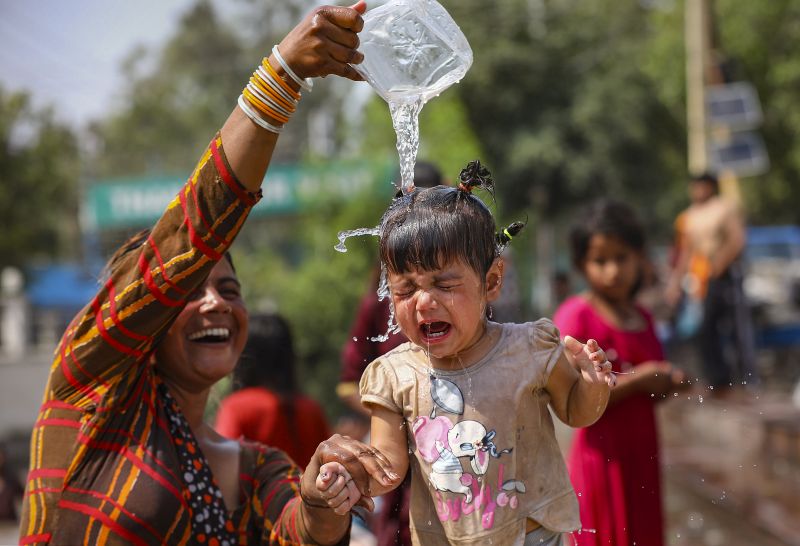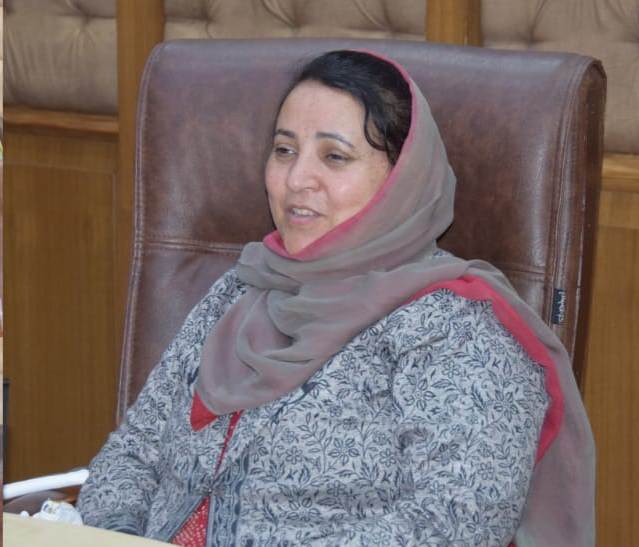By: Dr. Masoon A. Beig
The Kashmir Valley, which has historically experienced mild summers and snowy winters, is presently seeing an unexpected shift in its climate, with heat waves returning and getting stronger. With meteorological data indicating a worrying rise in the greatest temperatures from important locations in the area, such as Srinagar, Gulmarg, Pahalgam, Qazigund and Kokernag, this has been increasingly noticeable since 2020.
Breaking all time record Temperature in valley hit new heights on 22 May, setting new records and taking the region to its limits of heat. Srinagar saw a sizzling 34.4°C, a new high, while Qazigund recorded 33.4°C, Kokernag 33.2°C, and even the cooler Pahalgam reaching 27.8°C. These were record highs for some of these places during the month of May. The scorching temperature forced individuals to stay indoors, particularly in cities where concrete infrastructure made the heat more unbearable by trapping it. Outdoor events were significantly curtailed as the suffocating conditions lasted. In turn, the administration made official announcements of heat wave warnings and public health alerts, calling on citizens to drink plenty of fluids, stay away from direct sunlight, and keep a special eye on vulnerable populations like children and the elderly. In the interest of health and students’ safety, the Directorate of School Education changed school hours for both government and private schools. The classes would start earlier in the morning to escape the hottest part of the day. Hospitals are gearing up to handle patient flow with cases of increase in dehydration, heat stress, and sunstroke, especially among children and elderly.
This is not the first time but the frequency of heatwaves have been observed in valley from past few years when in August 2020, Srinagar had 35.7°C, the highest August temperature in almost four decades. This was again followed by an abnormal peak in July 2021 when Srinagar reached 35.0°C, which was the highest July temperature in eight years. This further intensified in June 2023, when the same city reached 35.0°C, tying for the highest June temperature in the last ten years. In September 2023, Srinagar reported an abnormal high of 34.2°C, the second highest-ever temperature for September since 1891, according to the India Meteorological Department (IMD). Early 2024 saw January’s unprecedented average maximum of 11.7°C tie the highest January ever in 1902 and 2001.The situation took a turn for the worse in May 2024, when several records were broken across the valley. On May 23, Srinagar reported 32.2°C, the highest May temperature in more than a decade. Qazigund recorded an all-time high of 34.0°C on May 27, breaking the previous record of 33.6°C set in 1981. Pahalgam, a popular hill resort, recorded 28.6°C in the same month, its second-highest in 23 years, after 30.8°C recorded in 2000. Kokernag reported 31.6°C in May 2024, the second-highest in 22 years. Once again in July 2024, Srinagar reached 36.2°C, the highest July day in the past 25 years.
This dramatic upward trend in summer temperatures is typical of a larger pattern associated with regional climate change. A number of scientific studies blame this trend for being caused by global warming due to greenhouse gas emissions. The Sixth Assessment Report of the Intergovernmental Panel on Climate Change (IPCC) states that Himalayan places such as Kashmir are heating up at almost twice the global average. This is exacerbated by domestic factors like widespread deforestation, hasty urbanization, and growing infrastructure. The construction of highways, railways, transmission lines, housing colonies, and industry units has decreased natural cover and enhanced land heat absorption.
Glacier and snowpack melting in the higher Himalayas has added to this warming via decreased albedo—less snow results in more solar radiation being absorbed instead of reflected. Satellite imagery from ISRO and studies by the Snow and Avalanche Study Establishment (SASE) indicate that key glaciers feeding the Jhelum and Lidder rivers have shrunk by over 15% in the last two decades. This not only contributes to local warming but also reduces water availability during peak summer months.
Land use changes are playing a significant role as well. Wider urban habitations and lesser forest cover have formed urban heat islands, particularly in lower-altitude towns such as Anantnag, Pulwama Baramulla, and Budgam. Heatwaves are no longer limited to Srinagar; rural and hill districts, earlier regarded as cool belts, are witnessing excessive heat. Statistics provided by the Jammu and Kashmir State Disaster Management Authority (SDMA) indicate that the number of heat stress calls and hospitalizations for heat exhaustion grew more than 200% between 2020 and 2025.
Another underappreciated culprit is the build-up of black carbon—fine aerosol particles from fossil fuel combustion, biomass burning, and diesel emissions. Research by the Centre for Science and Environment (CSE) indicates that black carbon loading on snowfields has sped up glacier melting and caused local warming in Kashmir. This contributes to warming’s feedback loop: increased melt results in increased heat absorption, which results in additional melting.
The consequences of increasing heatwaves are threatening. Agriculture, the backbone of Kashmir’s economy, is under serious threat. Apple orchards in Sopore and Shopian, saffron fields in Pampore, and rice paddies in Anantnag are suffering from heat stress. Premature ripening, flower drop, and decreased yields have been observed by field experts at SKUAST-Kashmir. Water supplies are being stressed by premature snowmelt, which disturbs the magnitude and timing of river flow. This has impacts on irrigation, hydroelectric power generation, and domestic supply.
Public health effects are increasing too. Heat illnesses like dehydration, sunstroke, and heat-induced cardiovascular disease have increased, particularly in May and July, as per a 2025 report by the Directorate of Health Services. The susceptible group—elderly, children, and outdoor workers—are disproportionately affected.
Tourism, a vital source of income for the region, is not spared. The reputation of Kashmir as a cool summer destination remains shaken when heatwaves overlap with tourist peak season. Even upper-altitude spots like Pahalgam and Gulmarg witnessed temperature hikes-putting impact on tourism sector.
The increasing heat wave trend in Kashmir Valley is an environmental crisis that is a combination of global climate disturbance as well as local mismanagement of natural resources. The combined effect of global warming, glacial melting, land-use alteration, and pollution has altered the climatic character of the valley. If left unabated, the valley could see irreparable ecological, economic, and public health impacts over the next few decades. Urgent policy action, sustainable development planning, and community-based climate adaptation are essential to safeguard Kashmir’s environmental heritage and human well-being.
The Author is Environmental Geographer and teaches Geography at Altaf Memorial Government Degree College Kelam Kulgam
Email masoongeo@gmail.com




